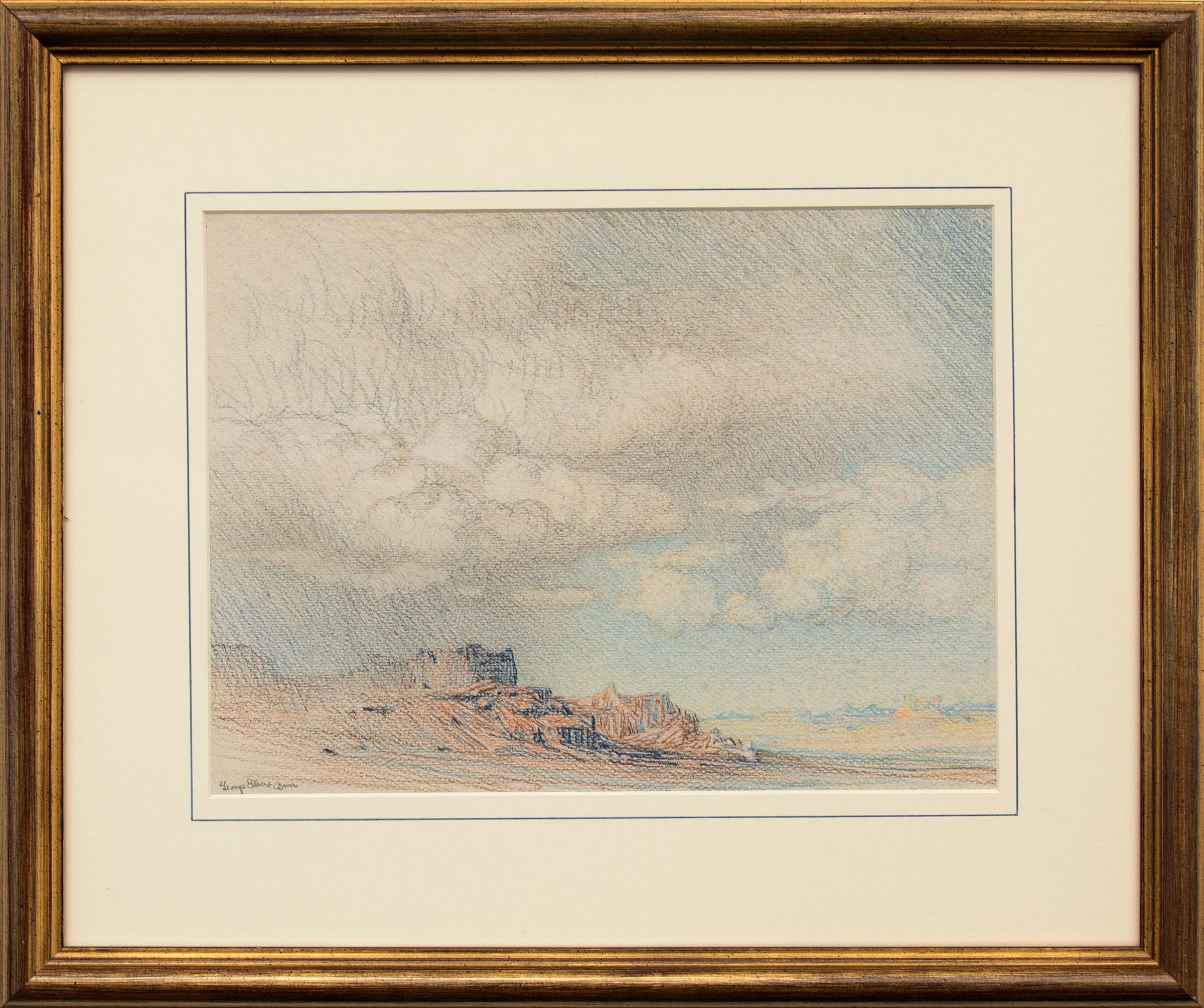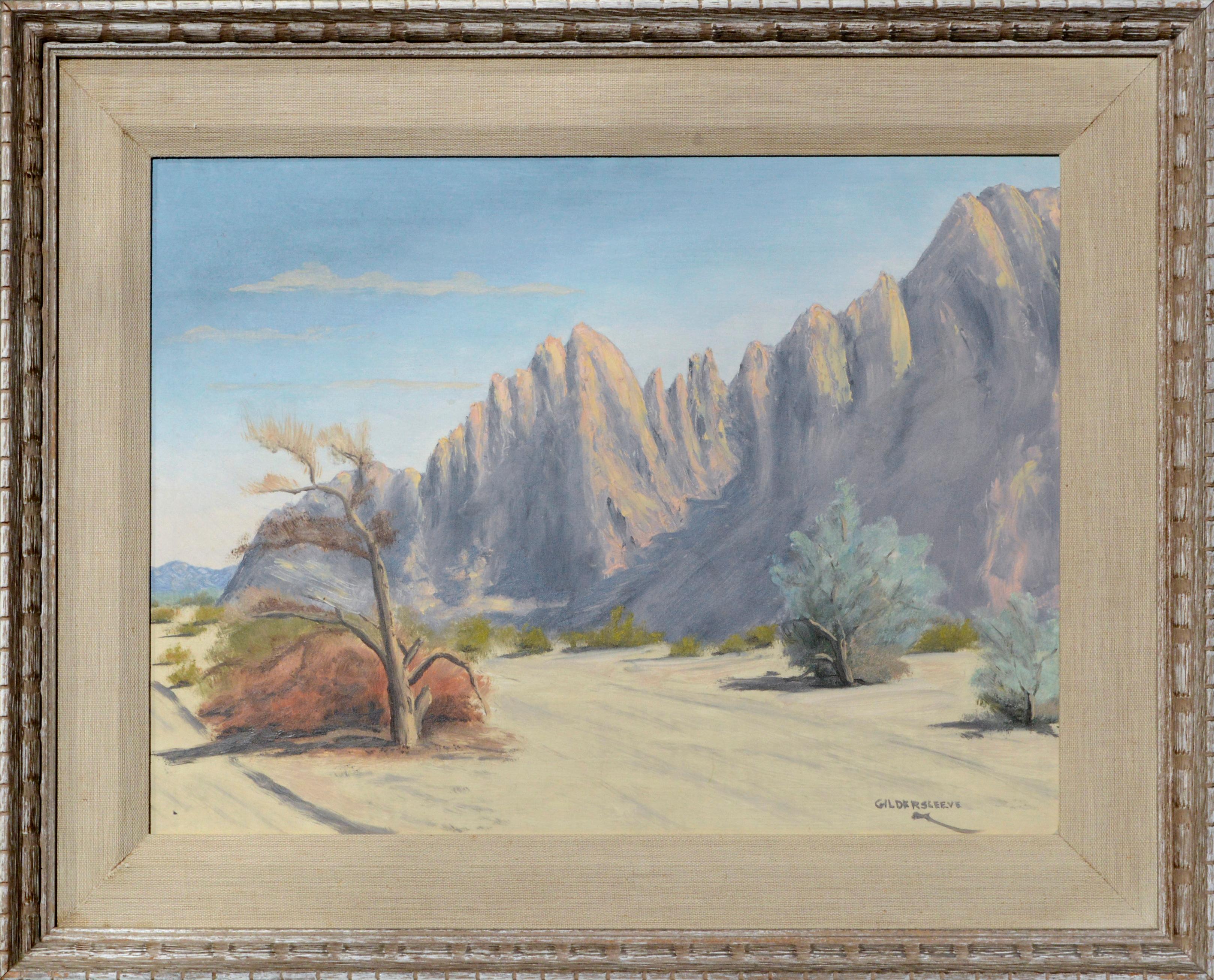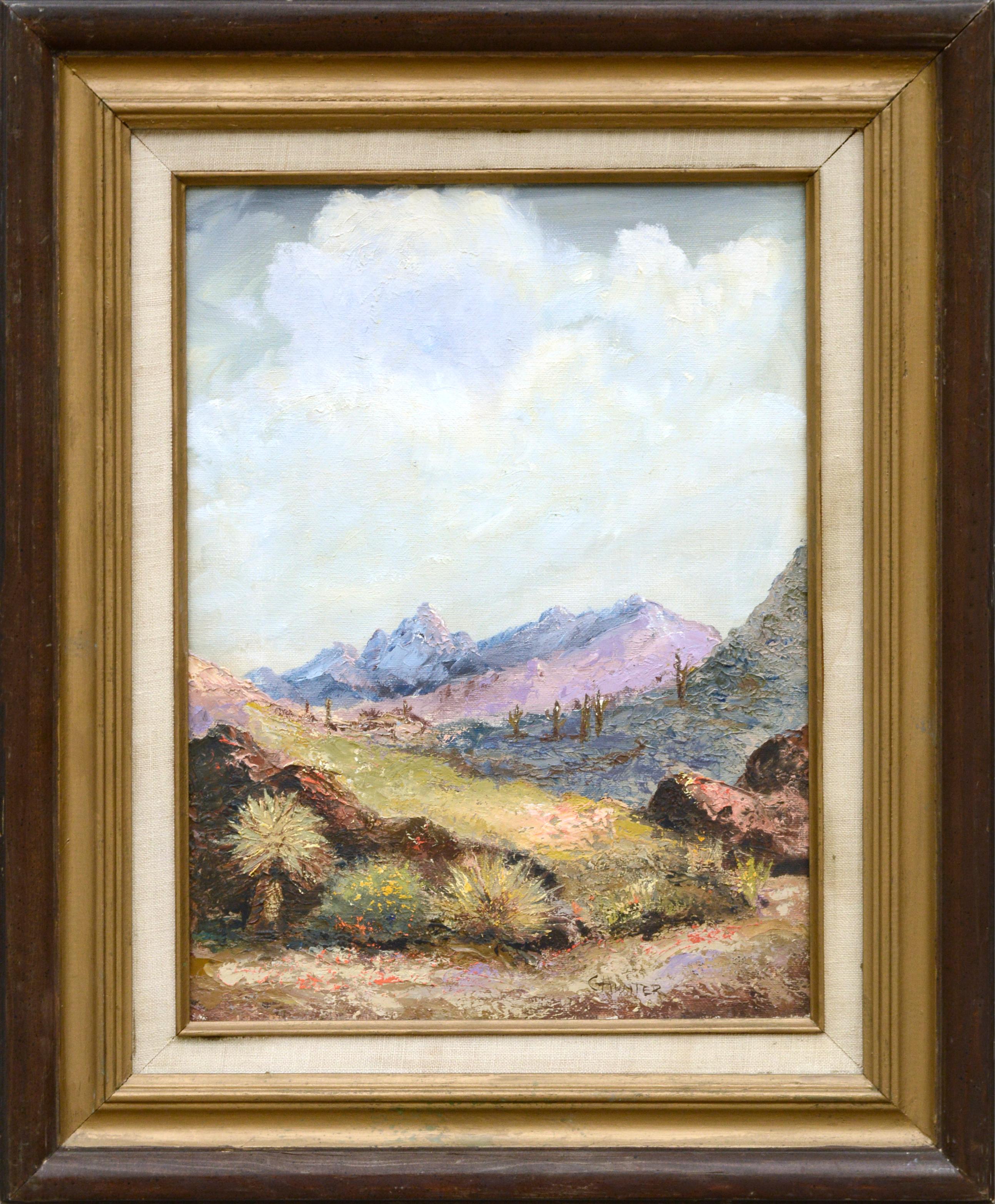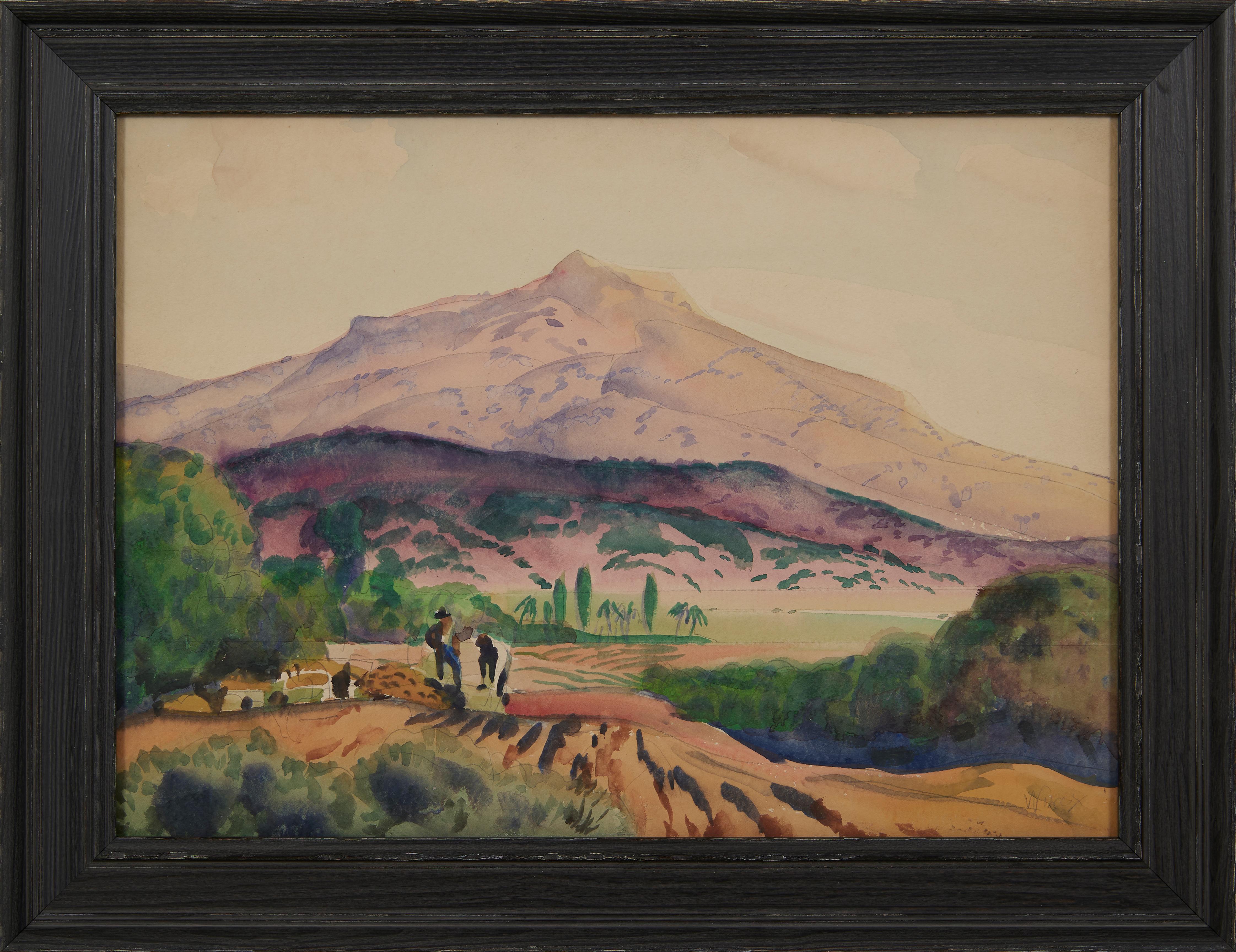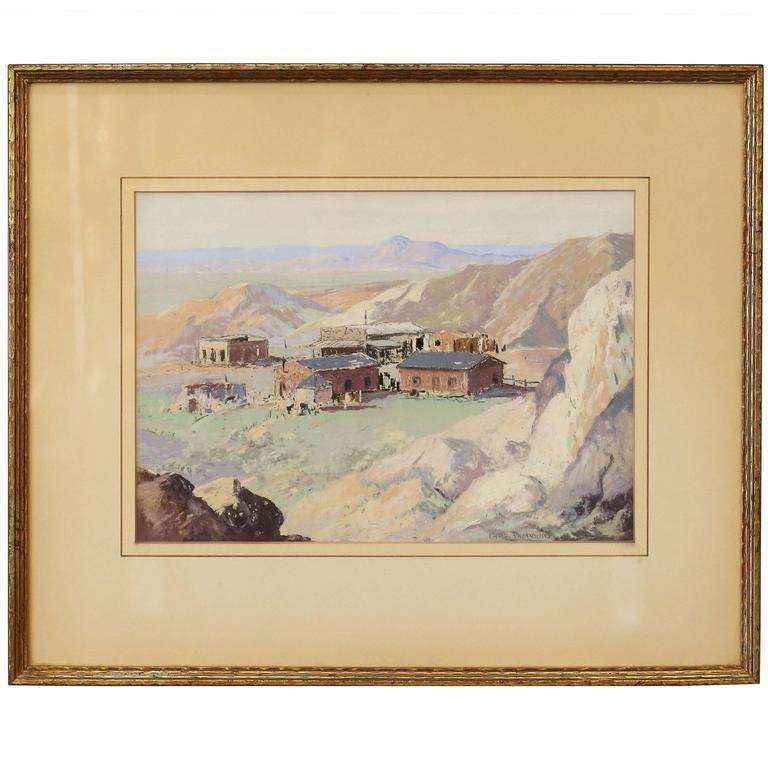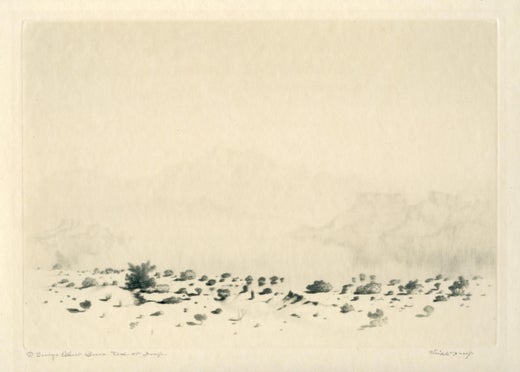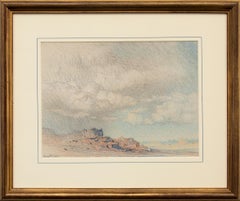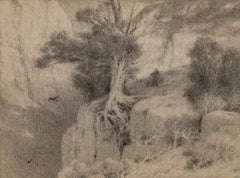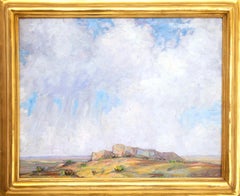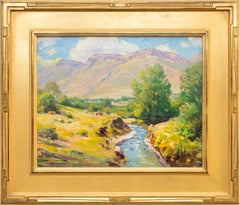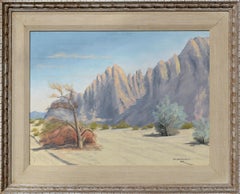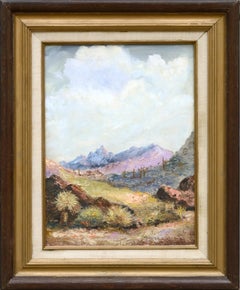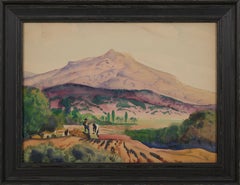George Elbert Burr1880s Southwestern Desert Landscape Drawing - Morning Near Arizona, Summer1888
1888
About the Item
- Creator:George Elbert Burr (1859 - 1939, American)
- Creation Year:1888
- Dimensions:Height: 17 in (43.18 cm)Width: 20.25 in (51.44 cm)Depth: 1 in (2.54 cm)
- Medium:
- Movement & Style:
- Period:
- Framing:Frame IncludedFraming Options Available
- Condition:very good vintage condition.
- Gallery Location:Denver, CO
- Reference Number:Seller: 246281stDibs: LU27312535472
George Elbert Burr
George Elbert Burr was an American printmaker and painter best known for his etchings and drypoints of the desert and mountain regions of the American West. He enjoyed success early, providing illustrations for Harper's, Scribner's Magazine, Frank Leslie's Weekly, and The Cosmopolitan. In 1892, he began a four-year project illustrating a catalog of Heber R. Bishop's collection of jade antiquities for the Metropolitan Museum of Art. This project, producing etchings of over a thousand artifacts, paid well enough for Burr to embark on an extended tour of Europe upon its completion with his wife. Over the next five years, as they traveled in Italy, Germany, and the British Isles, Burr amassed sketches and watercolors that would provide the source material for his copper plate etchings of European scenes. In 1924, the Burrs settled in Phoenix, Arizona, where he would remain for the rest of his life. The change of scenery allowed him to round out his oeuvre of Western landscapes with expansive views of the Sonoran and Mojave deserts. He and his wife, who died in 1941, are buried in Cameron. Today, George Elbert Burr is widely considered to be one of the finest of the early 20th-century American etchers. His prints are in several prominent collections including the Smithsonian American Art Museum, the British Museum, the French National Print Collection, Luxembourg Gallery, Victoria and Albert Museum, the New York Public Library, Brooklyn Museum, Museum of Northern Arizona and the Congressional Library in Washington, D.C.
- ShippingRetrieving quote...Shipping from: Denver, CO
- Return Policy
More From This Seller
View AllEarly 20th Century American Impressionist Landscape Drawings and Waterco...
Color Pencil, Paper
1910s American Impressionist Landscape Drawings and Watercolors
Graphite
1920s American Impressionist Landscape Paintings
Oil, Board
1920s American Impressionist Landscape Paintings
Oil
1930s American Impressionist Landscape Paintings
Oil
20th Century American Impressionist Landscape Paintings
Watercolor
You May Also Like
1920s American Impressionist Landscape Paintings
Fiberboard, Oil
Late 20th Century American Impressionist Landscape Paintings
Canvas, Oil, Stretcher Bars
1930s American Modern Landscape Drawings and Watercolors
Watercolor
Early 1900s American Impressionist Landscape Drawings and Watercolors
Watercolor, Gouache
1930s Impressionist Landscape Drawings and Watercolors
Pastel
1910s American Impressionist Landscape Drawings and Watercolors
Paper, Watercolor
